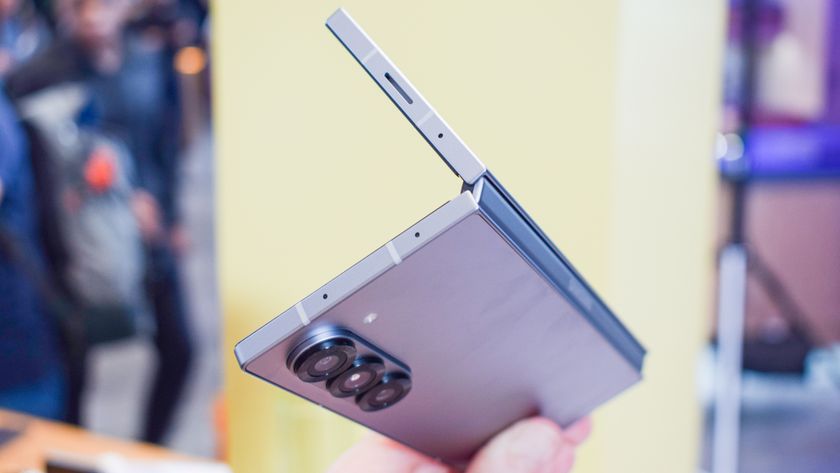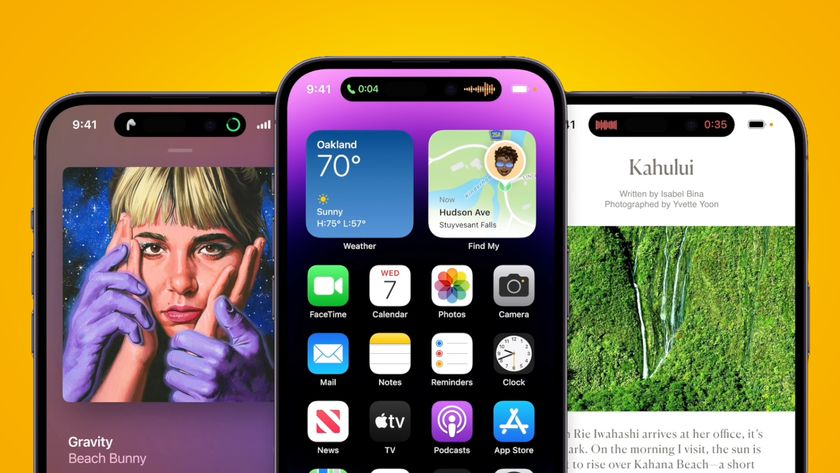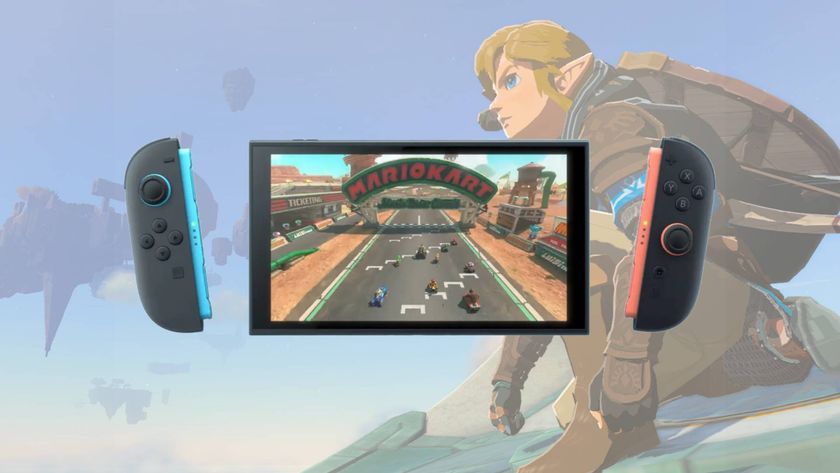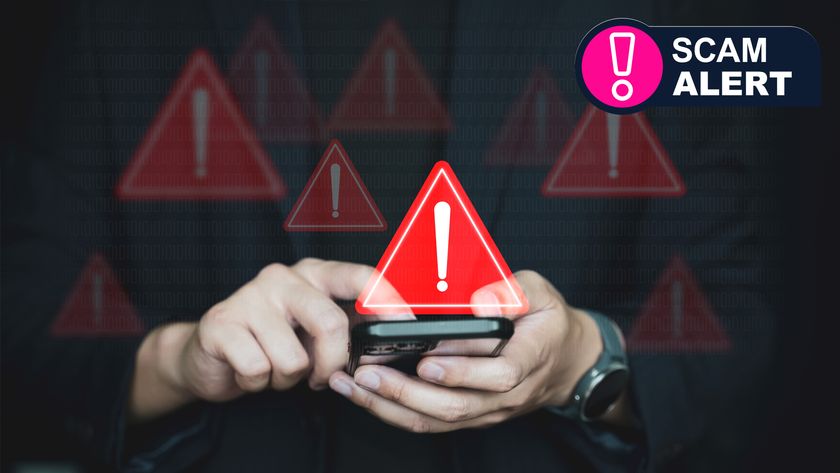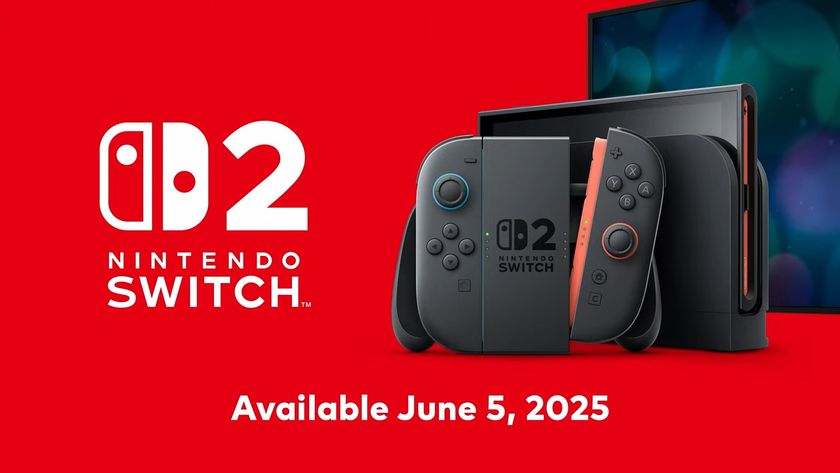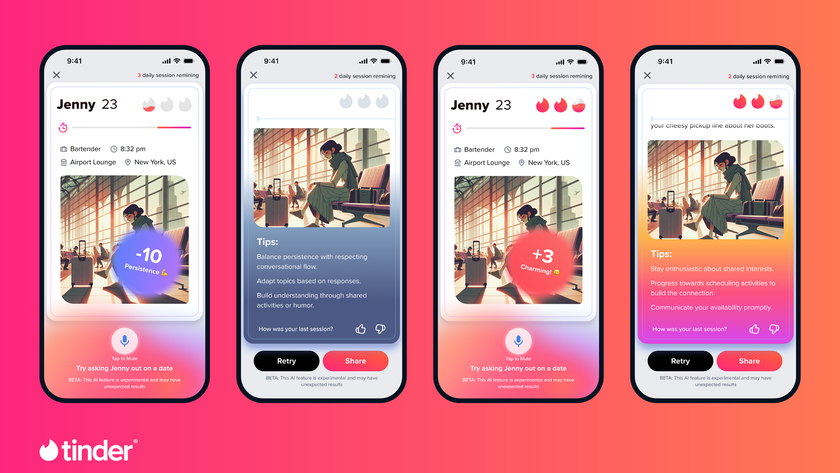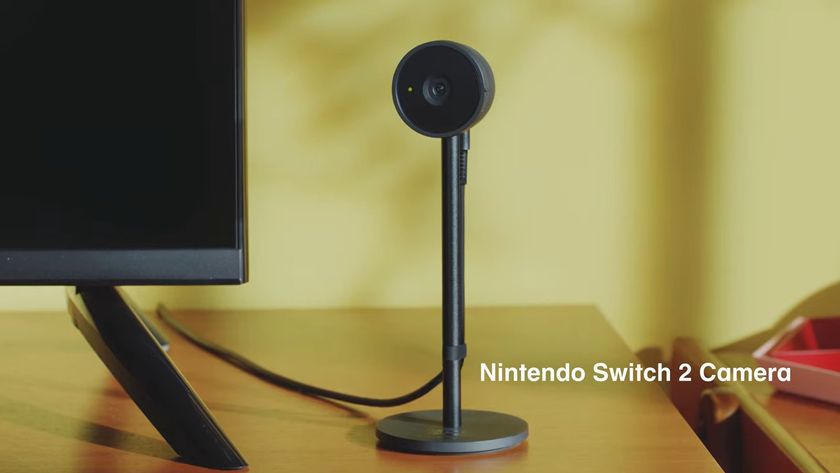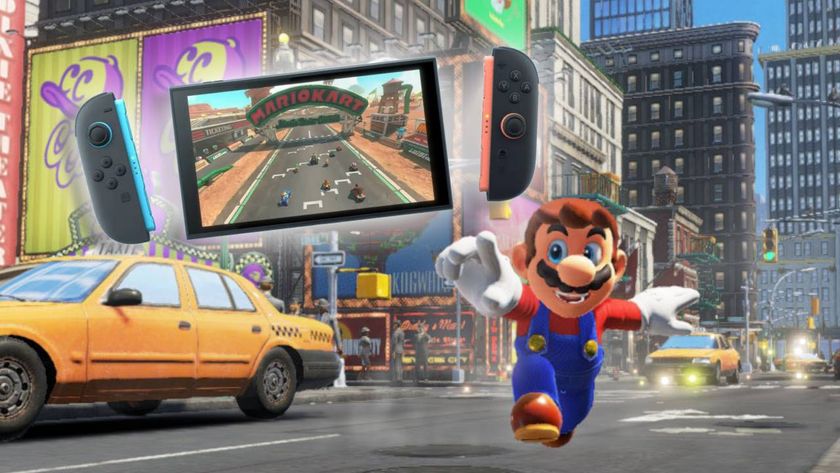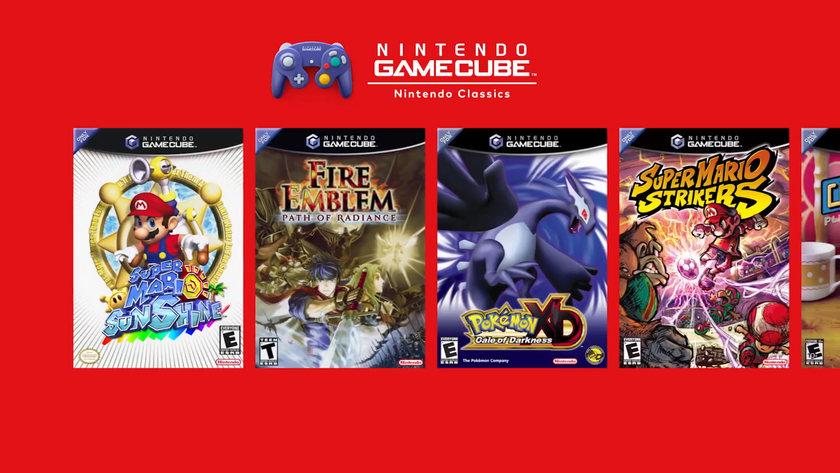The world's first 5G phone: our hands-on with the future of smartphones
Impressions from our five days with the first 5G phone you can buy
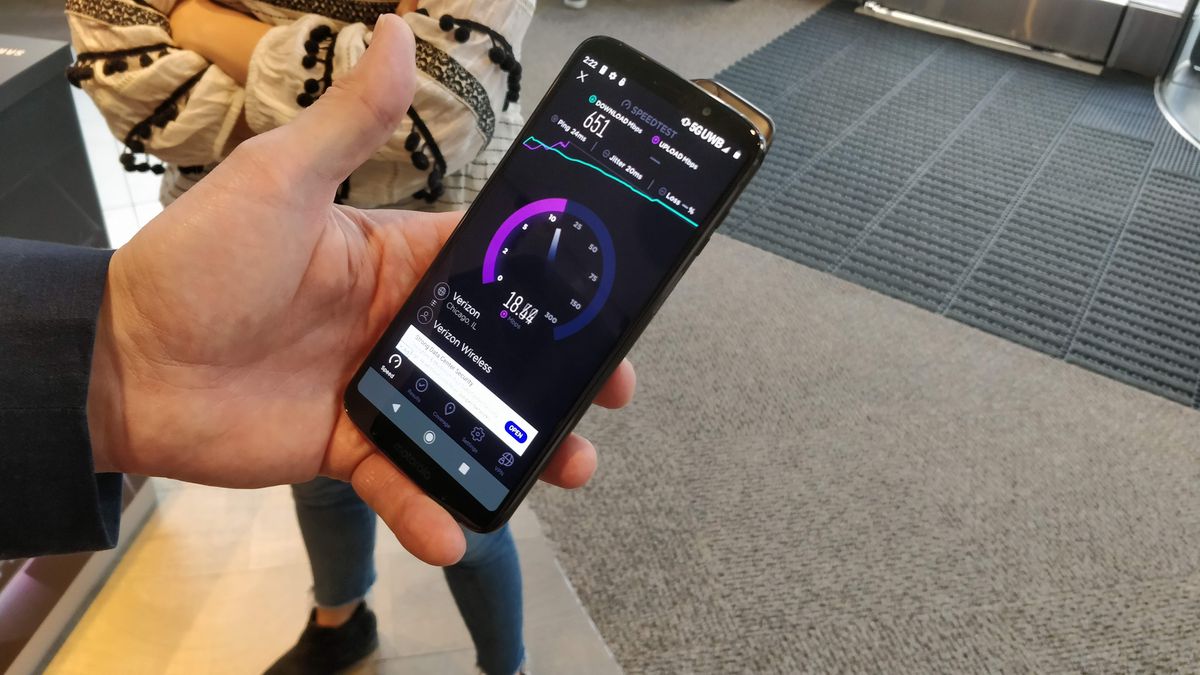
TechRadar became the first publication to buy the world's first 5G phone, and we've been testing it out ever since – nearly a week of speed tests in the US.
Verizon unexpectedly got a jump on many other countries - including South Korea, where the Samsung Galaxy S10 5G just launched - and deployed its 5G network in Chicago.
We spent hours trawling the streets looking for the only handset that could support it (the Moto Z3 with a 5G Mod slapped on the back) and then hung around in the limited spaces where 5G signal was being broadcast.
We're still mid-test (5 days into the 5G tests), so follow our live blog below to see our findings as they happen, and then read on to see how the speeds and reliability compare to the already-fast, already-stable 4G signals we have at the moment.
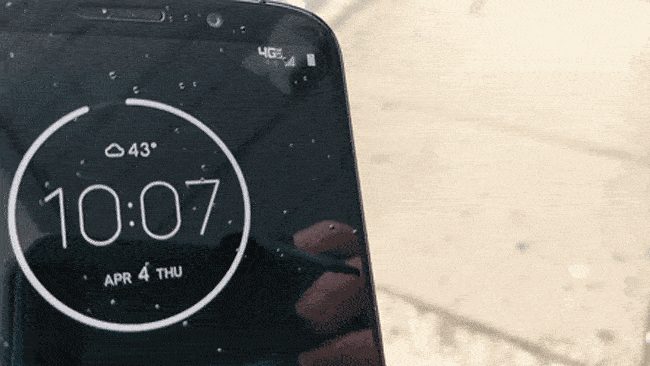
Our live 5G testing
4/8, 2:40 pm CT: The 5G network appears to be progressing, as our latest test downloading a 595MB movie from Netflix managed to complete in under 3 minutes. We didn't have consistent 5G through the whole download, so there was some variation of speeds, but we saw speeds between 3 and 6MB/s much of the time 5G was active.
4/6, 6:01 pm CT: Managed to pick up 5G signal in an apartment building in the West Loop while near the window. But, it was inconsistent, and a speed test only hit 28.3Mbps.
4/6, 3:03 pm CT: Curious about the quick toggling between 5G and 4G LTE in some areas, I wandered over to a spot in the West Loop where I'd consistently noticed this behavior. If the switching were simply a matter of the network being unused, then starting a download or network speed test should have stopped the behavior. We began a speed test, but the quick switching continued, and the result of the speed test was a low 19Mbps. We then started a Netflix movie download that mustered 2 to 3MB/s, but the switching persisted, with connectivity never locking into 5G.
Get daily insight, inspiration and deals in your inbox
Sign up for breaking news, reviews, opinion, top tech deals, and more.
4/5, 1:30 pm CT: Checking to make sure Netflix and the Play Store weren't a speed bottleneck, we connected to Wi-Fi and retried the downloads. The movie downloaded at close to 20MB/s and the game downloaded at about 13MB/s, vastly exceeding what we could get on our 5G connection.
4/5, 12:59 pm CT: Took another 5G field trip, and found a consistent signal at the base of a building that seemed like it would have actually blocked signal. A few speed tests that exceeded 400Mbps confirmed we had a real 5G connection, though a test using a single data stream showed only 17.3Mbps downstream. In between multiple tests that showed high speeds, we attempted to download another movie on Netflix and a game on the Play Store, but neither managed to download much faster than 1MB/s, whereas a 400Mbps connection should offer up to 50MB/s download speeds.
4/5, 9:10 am CT: Further into West Loop, found a semi-stable 5G signal and ran a series of speed tests, getting 292Mbps, 113Mbps, 65.5Mbps, and 240Mbps. The speed tests didn't show a correlation between 5G signal strength and speeds.
4/5, 8:58 am CT: Walked into the West Loop on a street that has frequent wide views of The Loop. Once again, experienced 4G and 5G quickly switching back and forth. Ran a speed test while the network was toggling and got 47.4Mbps downstream.
4/4, 5:25 pm CT: Left the West Loop after a day generally spent without 5G. The millimeter wave technology used is fairly dependent on line of sight, and that can be hard to find, but we'll keep trying.
4/4, 12:30 pm CT: Popping back outside into the rain to see how long it'd take to download The Raid Redemption at 446MB on the 5G network, we gave up after 2 minutes and 30 seconds that had only netted 44MB. A quick speed test showed the lowest speeds we'd seen all day at 59.9Mbps. Never mind downloading a whole TV show season before a flight takes off, we couldn't even download Iko Uwais kicking his first ass.
4/4, 12:08 pm CT: Went into the grocery store on that same corner and couldn't get 5G even sitting next to a window near that corner.
4/4, 11:56 am CT: Took the Moto Z3 out for a walk in the West Loop, because the 5G signal couldn't bother to join me indoors on this cold and rainy day. Found a corner closer to The Loop that had 5G signal, though it was still spotty. Ran a speed test that hit 448Mbps downstream with a 19ms ping time.
We literally cobbled together the world's first 5G phone when we slapped the newly-launched 5G Moto Mod onto the back of an existing 4G phone.
And it is indeed faster, according to our on-the-ground 5G tests using the Moto Z3, last year's 4G LTE phone that can be upgraded to 5G care of the new 5G add-on. Yes, 5G service is here, and it's coming together in bits and pieces.
We could buy the 5G Mod at exactly one Chicago store on launch day, and it came out faster than anyone expected. Verizon and Motorola jumped ahead of their original April 11 launch to become the first to 5G phone manufacturer and carrier, beating Samsung's scheduled April 5 launch in Korea. Crafty.
While discussing the early launch with Verizon Consumer Group President Ronan Dunne, he said that Verizon was always going to be first, making it clear why the company had switched its launch to just days before Samsung's launch in Korea.
Although this makes Verizon and Motorola the first to 5G in the world, there's still the question of what that really means for all of us, the people using the the first 5G phone on the first 5G network – which is only available in parts of two US cities.
We'll be providing live updates over the course of our testing as we spend more time seeing just what the first 5G phone and 5G cellular network can and can't handle.
What it took to get 5G service



Verizon's activation of its 5G network is far from a wide launch. Officially, the network is only live in Chicago, Illinois, and in Minneapolis, Minnesota. While Chicago is a sizable city, and Minneapolis isn't small, the actual availability of 5G in each city is still limited.
For now, only a handful of Chicago wards are covered in the 5G network, and Verizon hasn't released any coverage map for customers to see.
These are dense areas of Chicago, including Magnificent Mile (specifically the Verizon store), Gold Coast, Old Town, River North, and portions of South Loop and West Loop. Minneapolis' 5G coverage areas are in Downtown West, Downtown East, Elliot Park, and the Mall of America's Verizon Store.
Aside from the hands-on in the Magnificent Mile Verizon Store where the launch event took place, we knew getting to experience 5G in the wild might take a bit of work.
We needed both the Moto Z3, the 5G Moto Mod, an unlimited data plan from Verizon, and we had to pay a special $10 5G service fee (at present, the $10 fee is waived) on top of the data plan to access the 5G network. In the end, the hardware cost us $749 at the store (without opting for a contract where there are some discounts), and service will cost about $100 a month.
Without further ado, let's get to business: is it really faster?
5G vs 4G LTE speeds
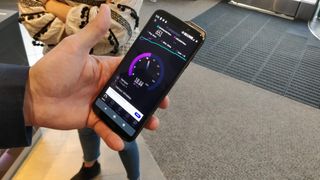
In the Verizon Store where the launch event took place, there was a 5G node set up at the front. And, with a short distance between the Moto Z3 and the node, with line of sight, the device managed to hit 651Mbps downstream. Compare that to a later test on the 4G network that hit 213Mbps downstream. Meanwhile, upstream data actually only uses 4G, so there's no speed boost for that.
How does that speed translate into real-world performance?
All the 1080p videos on YouTube started playing promptly as we flicked through one after another. Scrubbing through each video's runtime caused a momentary pause before playback resumed. However, after switching over to 4G, we didn't see much of a difference while doing the same thing.
Since most of us don't use our mobile network just to run speed tests, we jumped right onto the Play Store to download the hefty 1.81GB PUBG Mobile game. On the 5G network, the download took just shy of 4 minutes and 30 seconds. Repeating the download on the 4G network, the download took 6 minutes and 8 seconds.
So, while the 5G network is clearly the faster of the two, it's not by an order of magnitude.
5G reliability
Perks of Chicago: public transit, access to the lake, 5G... pic.twitter.com/Z7xMNHxgc3April 3, 2019
Over the course of our initial hands-on, we seriously questioned Verizon's 5G network's reliability.
Take the Verizon Store where the event took place: it was scarcely bigger than 30 feet across and 100 feet back, with a 5G node in the front of the building. Reception was spotty toward the back, and could even peter out near the front. We noticed the Moto Z3 switch from 5G to 4G LTE on multiple occasions as we moved around, and had to keep checking that our speed tests were 5G all the way through.
While we'll be testing the 5G connectivity over the next week throughout the Chicago area, we'll be checking whether the millimeter wave technology Verizon uses for its 5G network will be able to penetrate obstacles and walls. The lack of a defined 5G map is also an issue, as any time we don't get 5G, we'll be left wondering whether it's because there's no signal in the area or if the phone is just fails to pick it up.
We're going to continue to test the advent of 5G in Chicago this week, so stay tuned for updates on how the service functions for us and the top speeds we hit. When it works, and where it works, it's certainly faster than 4G LTE; the future of smartphones is here, but not quite everywhere.
Over the last several years, Mark has been tasked as a writer, an editor, and a manager, interacting with published content from all angles. He is intimately familiar with the editorial process from the inception of an article idea, through the iterative process, past publishing, and down the road into performance analysis.
